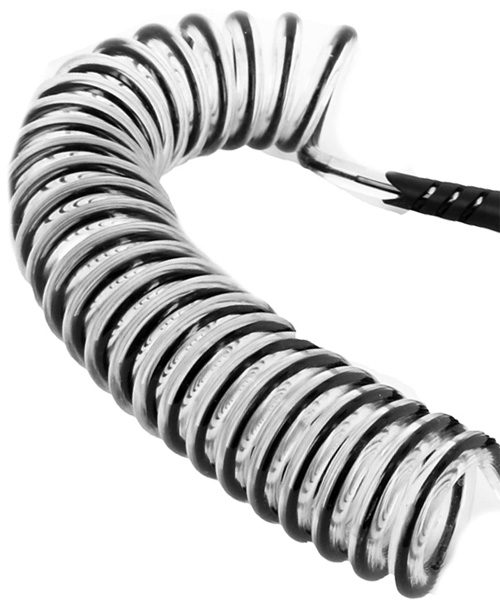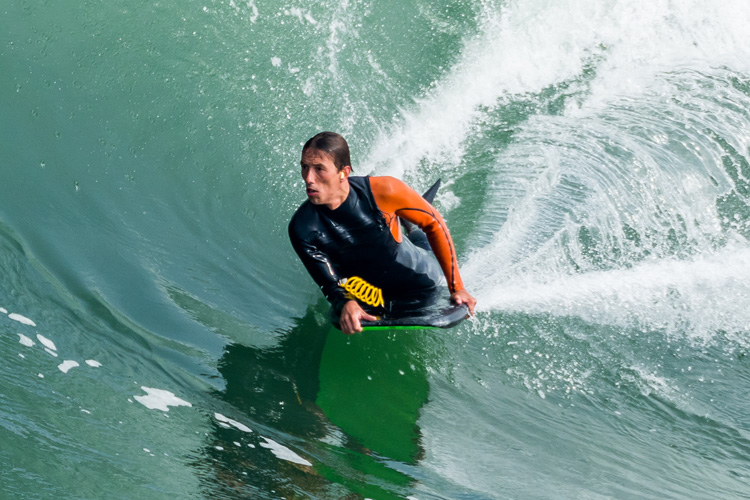Unlike the surfing leg rope meant to be used strapped around your ankle and dragged behind the surfboard, the bodyboard leash stays in front of the rider all the time.
The bodyboard leash connects to your arm from one end to the board from the other. It is an essential wave riding gear item from entry to advanced levels.
There are two types of bodyboard leashes: the wrist leash and the bicep leash. Both models have pros and cons, so it is usually only a matter of personal preference.
Wearing a leash can be tricky, especially if you don't put it on correctly.
One of the most common mistakes riders make is attaching it to the body with a wrong cord direction.

Where to Drill the Boogie Board
In theory, it's important to note that the leash should be installed on the right side of the deck if you're right-handed and on the left side if you're left-handed.
However, some bodyboarders opt for installing in the center of the board, around seven inches away from the nose, so that you may eventually adapt the position of the leash to the existing conditions.
For instance, in a left-hand point break, your right hand will be grabbing the rail in the middle of the board, and your left hand will be closer to the nose.
As a result, you may prefer to have less rope stretched or no leash attached to your leading arm so that you can push the inside rail into the wave.
Or the other way around.
That is why a centered leash is somehow a balanced compromise between all variables and will allow you to experiment with different riding approaches.
Many drop-knee specialists tend to install a longer leash in the top center of the bodyboard, close to the nose, allowing for more maneuverability on the deck.
The Direction of the Rope
Ideally, you should put the leash on with the rope coming away from the inside of your arm or wrist - the thumb side - so that the leash sits on the deck of the board rather than in the water creating drag.
The goal is to let the bodyboard leash stay out of the way, and that's why, today, coiled leashes are the only reliable option.
The best models will stay tightly coiled even after being submitted to extreme wave rides and wipeouts. They stretch and then return to their original, compact shape in less than a second.
But that doesn't mean you should not take care of it. After each session, make sure to recoil and fasten it with the velcro to keep its original spring.
